

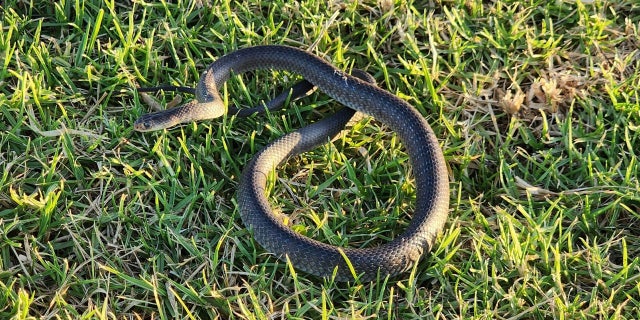
The Wild Conservation found a 2-foot Eastern Brown Snake still with juvenile banding in Sydney, Australia. (WILD Conservation)
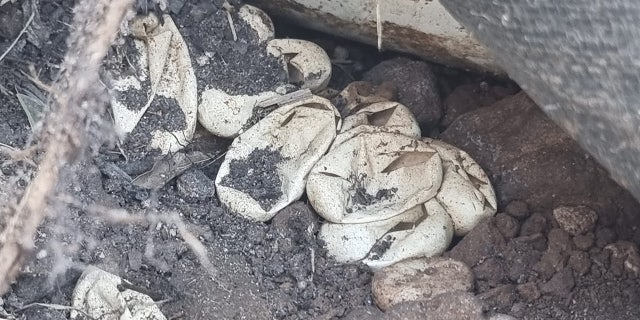
Wild Conservation officials responded and started to dig in the resident's yard where the found more than 100 hatched Eastern Brown Snake eggs. (WILD Conservation)
"[They] said they had a brown snake problem, which we get a lot, but this turned out a little different," Wild Conservation said in a Facebook post.
Wild Conservation officials responded and started to dig in the resident's yard where the found 110 hatched Eastern Brown snake eggs. They believe the eggs came from multiple female snakes over the past several years.
AMERICA'S STRANGEST ALLIGATOR ENCOUNTERS: SEE THESE 10 STARTLING STORIES
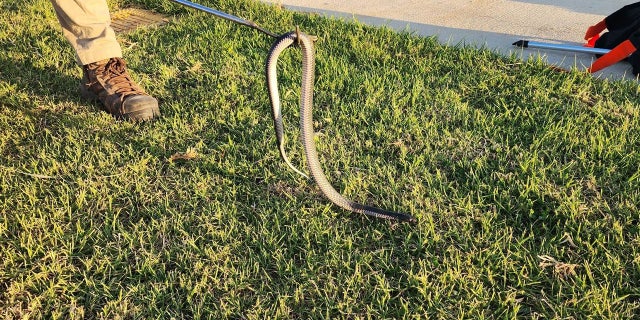
Wild Conservation also found a 3ft Red Bellied Black snake with a white underside. (WILD Conservation)
They also believed the females formed a communal or picked an annual nesting site. Under a slab of concrete, the Wild Conservation also found a 3-foot red-bellied black snake—another deadly snake—and a 2-foot-long adult eastern brown snake.
"The first baby brown showed itself after Kane dug around a little," Wild Conservation said. "Then as we lifted the slab, a 3ft Red Bellied Black Snake shot out and was quickly captured, and after a bit more poking around, Rachael spotted a 2ft Eastern Brown Snake slithering at full speed from under the slab."
MISSING INDONESIAN GRANDMOTHER EATEN ALIVE BY 22-FOOT PYTHON
The conservation organization said that the large snakes were found with opaque eyes and rough skin possibly due to the abundance of food in the area such as frogs, skinks and young snakes.
"We'll be back there soon to oversee the removal of the path and safe relocation of any more snakes," Wild Conservation added.
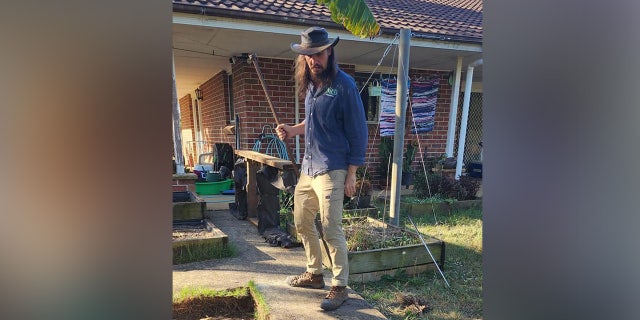
Snake catcher Kane Durrant stands by piles of hatched eastern brown snake eggs at a home in Sydney, Australia (WILD Conservation)
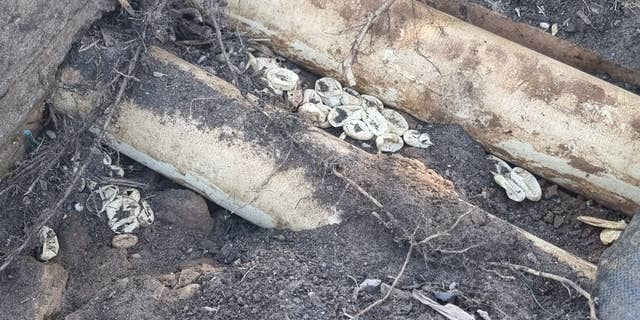
Wild Conservation found snake eggs between buried pipes and under weed mat in the family's yard in Sydney, Australia. (WILD Conservation)
Eastern brown snakes are responsible for more snakebite fatalities than any other species in Australia. The snake is native to eastern and central Australia and southern New Guinea and is a notoriously aggressive snake, known for biting people when stumbled upon or surprised. It can also move as fast as 12 miles per hour.
Their venom is considered to be the second-most toxic venom in the world. The venom contains a potent neurotoxin which slowly shuts down the victim's heart, lungs and diaphragm, causing the person to suffocate.
